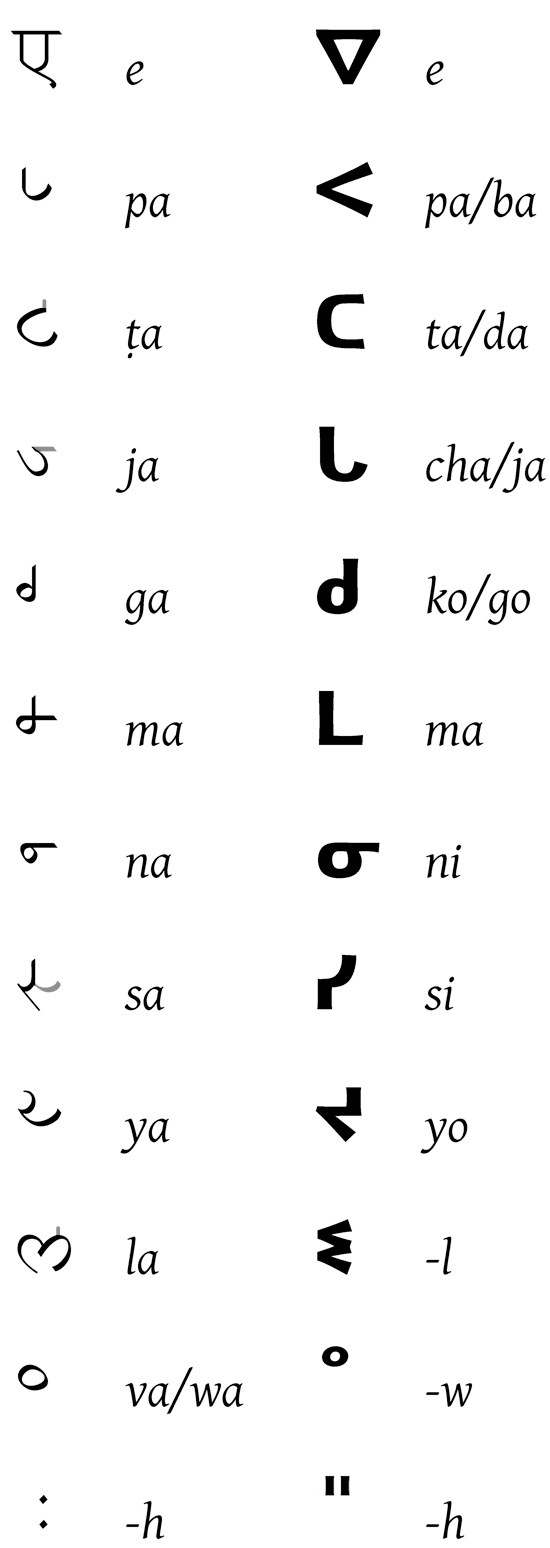|
Canadian Aboriginal Syllabics
Canadian syllabic writing, or simply syllabics, is a family of writing systems used in a number of Indigenous Canadian languages of the Algonquian, Inuit, and (formerly) Athabaskan language families. These languages had no formal writing system previously. They are valued for their distinctiveness from the Latin script and for the ease with which literacy can be achieved; indeed, by the late 19th century the Cree had achieved what may have been one of the highest rates of literacy in the world. Syllabics are abugidas, where glyphs represent consonant-vowel pairs. They derive from the work of James Evans. Canadian syllabics are currently used to write all of the Cree languages from Naskapi (spoken in Quebec) to the Rocky Mountains, including Eastern Cree, Woods Cree, Swampy Cree and Plains Cree. They are also used to write Inuktitut in the eastern Canadian Arctic; there they are co-official with the Latin script in the territory of Nunavut. They are used regionally for t ... [...More Info...] [...Related Items...] OR: [Wikipedia] [Google] [Baidu] |
Featural Writing System
In a featural writing system, the shapes of the symbols (such as letters) are not arbitrary but encode phonological features of the phonemes that they represent. The term featural was introduced by Geoffrey Sampson to describe the Korean alphabet and Pitman shorthand. Joe Martin introduced the term featural notation to describe writing systems that include symbols to represent individual features rather than phonemes. He asserts that "alphabets have no symbols for anything smaller than a phoneme". A ''featural'' script represents finer detail than an alphabet. Here, symbols do not represent whole phonemes, but rather the elements (features) that make up the phonemes, such as voicing or its place of articulation. Theoretically, each feature could be written with a separate letter; abjads or abugidas, or indeed syllabaries, could be featural, but the only prominent system of this sort is the Korean alphabet, also known as hangul. In the Korean alphabet, the featural symbols ar ... [...More Info...] [...Related Items...] OR: [Wikipedia] [Google] [Baidu] |
Carrier Language
The Dakelh (ᑕᗸᒡ) or Carrier language is a Northern Athabaskan language. It is named after the Dakelh people, a First Nations people of the Central Interior of British Columbia, Canada, for whom Carrier has been a common English name derived from French explorers naming of the people. Dakelh people speak two related languages. One, Babine-Witsuwit'en is sometimes referred to as ''Northern Carrier''. The other includes what are sometimes referred to as ''Central Carrier'' and ''Southern Carrier''. Etymology of 'Carrier' The name 'Carrier' is a translation of the Sekani name 'aɣele' "people who carry things around on their backs", due to the fact that the first Europeans to learn of the Carrier, the Northwest Company explorers led by Alexander Mackenzie, first passed through the territory of the Carriers' Sekani neighbours. The received view of the origin of the Sekani name is that it refers to the distinctive Carrier mortuary practice in which a widow carried her husba ... [...More Info...] [...Related Items...] OR: [Wikipedia] [Google] [Baidu] |
Latin Script
The Latin script, also known as Roman script, is an alphabetic writing system based on the letters of the classical Latin alphabet, derived from a form of the Greek alphabet which was in use in the ancient Greek city of Cumae, in southern Italy ( Magna Grecia). It was adopted by the Etruscans and subsequently by the Romans. Several Latin-script alphabets exist, which differ in graphemes, collation and phonetic values from the classical Latin alphabet. The Latin script is the basis of the International Phonetic Alphabet, and the 26 most widespread letters are the letters contained in the ISO basic Latin alphabet. Latin script is the basis for the largest number of alphabets of any writing system and is the most widely adopted writing system in the world. Latin script is used as the standard method of writing for most Western and Central, and some Eastern, European languages as well as many languages in other parts of the world. Name The script is either called Latin script ... [...More Info...] [...Related Items...] OR: [Wikipedia] [Google] [Baidu] |
Languages Of Canada
A multitude of languages have always been spoken in Canada. Prior to Confederation, the territories that would become Canada were home to over 70 distinct languages across 12 or so language families. Today, a majority of those indigenous languages are still spoken; however, most are endangered and only about 0.6% of the Canadian population report an Indigenous language as their mother tongue. Since the establishment of the Canadian state, English and French have been the co-official languages and are, by far, the most spoken languages in the country today. According to the 2016 census, English and French are the mother tongues of 56.0% and 21.4% of Canadians respectively. In total, 86.2% of Canadians have a working knowledge of English, while 29.8% have a working knowledge of French. Under the ''Official Languages Act'' of 1969, both English and French have official status throughout Canada in respect of federal government services and most courts. All federal legislation is ena ... [...More Info...] [...Related Items...] OR: [Wikipedia] [Google] [Baidu] |

_cropped.jpg)